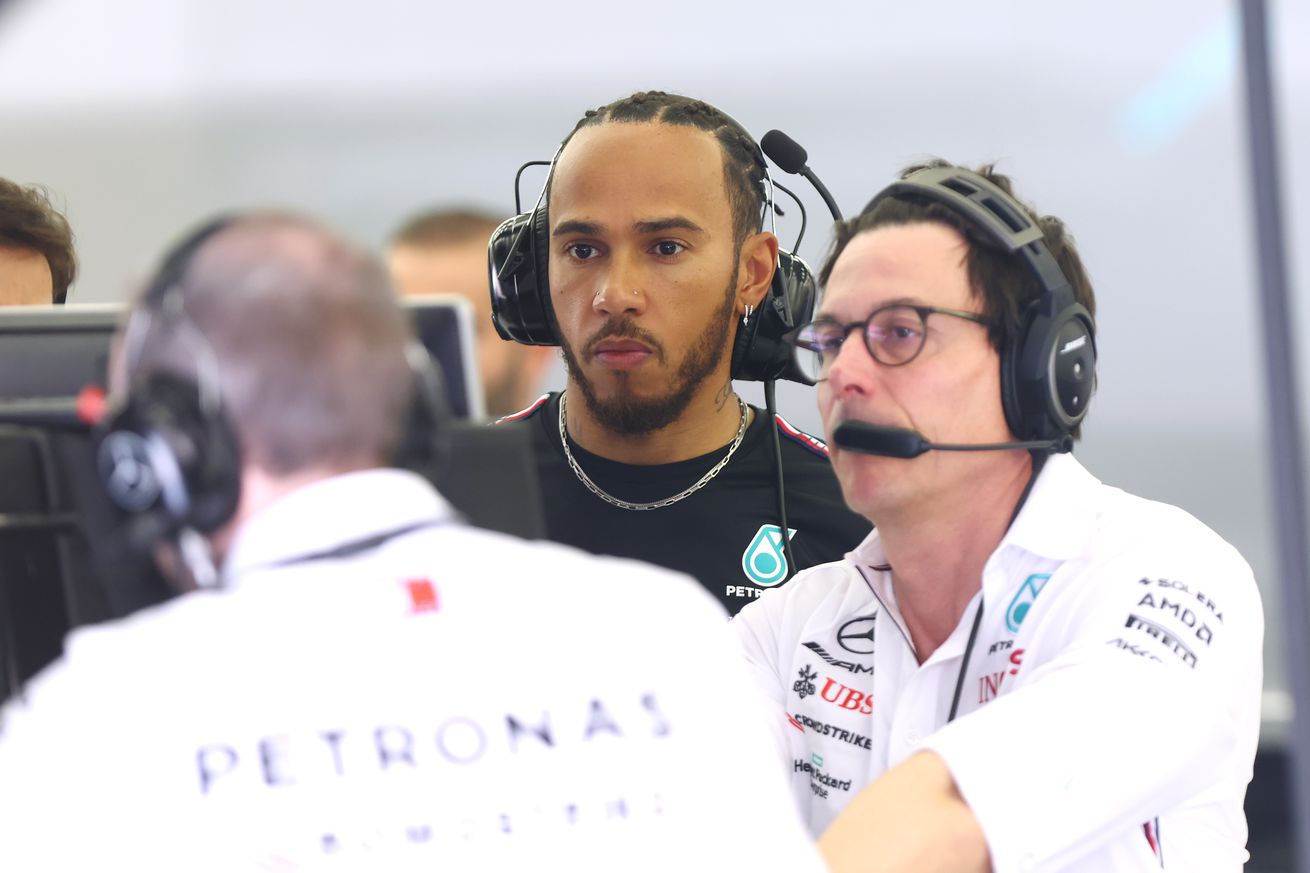Photo by Dan Istitene – Formula 1/Formula 1 via Getty Images
Toto Wolff and company pick up the pieces after a disappointing DQ
For a moment, everything was coming up Mercedes.
Lewis Hamilton’s strong drive in the United States Grand Prix saw him come across the line second, behind only Max Verstappen, which for a time solidified Mercedes’ status in second place in the Formula 1 Constructors’ standings. That finish further bolstered the belief that upgrades to the W14 ahead of the USGP would pay off not just in their current fight with Ferrari, but for their 2024 season as well.
Then, everything changed. A post-race inspection found that a plank on the floor of Hamilton’s car was not within the required limits, and following a meeting with race stewards, Mercedes was given the difficult news. Hamilton had been disqualified.
Ferrari driver Charles Leclerc was disqualified for the same reason, but Hamilton’s disqualification dropped him out of a podium position, and pushed Carlos Sainz Jr. up into third.
The end result? Instead of extending their lead over Ferrari, their rivals cut into their lead by six points.
“We can take a lot of positives from the car performance today. We hate coming so close to winning and falling short,” said Team Principal Toto Wolff in the team’s post-race report. “But this is a circuit where only a few races ago we wouldn’t have performed well because of the fast, sweeping corners. The upgrade seems to have made the car happier in those areas and it is working well. Directionally, it’s a very good sign.
“Turning to the race result and the disqualification, set-up choices on a sprint weekend are always a challenge with just one hour of free practice – and even more so at a bumpy circuit like COTA and running a new package.
“In the end, all of that doesn’t matter; others got it right where we got it wrong and there’s no wiggle room in the rules.”
Andrew Shovlin, the team’s Trackside Engineering Director, outlined how the disqualification happened. The format for the weekend, which included one of the season’s F1 Sprint races, was a contributing factor.
“We are of course naturally very disappointed to lose our podium finish. Unfortunately, it is one of the pitfalls of the sprint format where we have a solitary hour of running before parc fermé,” said Shovlin. “Without running at a race fuel load in FP1, combined with a circuit as bumpy as this and the parts of the track where the drivers have to put the car during the Grand Prix, have contributed to the higher than expected wear levels. We will go away and learn from this but also take the positives from our experience as a whole.”
Still, as Shovlin noted, the weekend was still a strong sign for the development of next year’s challenger.
“We can afford to be cautiously optimistic that the step we have made will translate into future race. Both drivers felt the improvement and it is positive for our development trajectory for 2024,” added Shovlin. “Whilst we are disappointed with the ultimate outcome today, we can be encouraged by the pace shown.”
However, when it comes to the present, there is one thing left to do, according to Wolff.
“We need to take it on the chin, do the learning, and come back stronger next weekend.”













